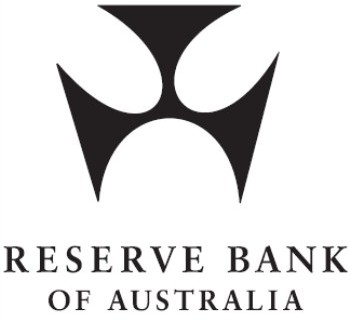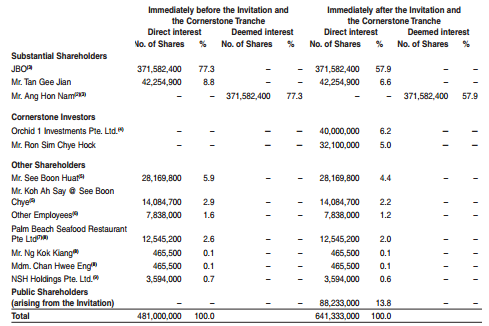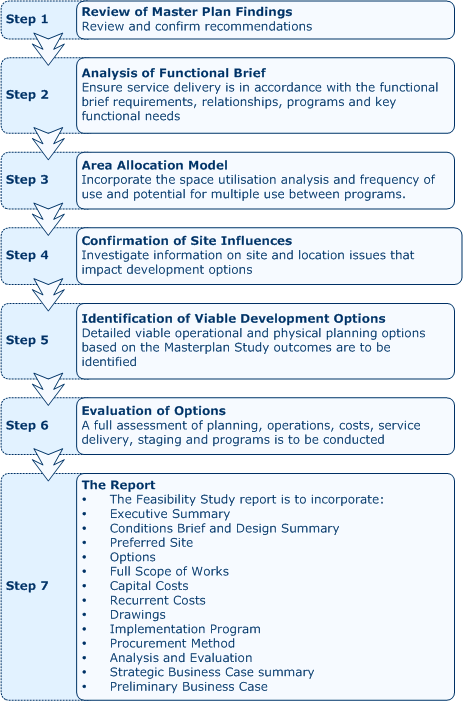Contents:


Since the preferred shareholders have the first right to dividends, they would take the entire dividend up to their limit (10% ofPar) and the common stockholders wouldn’t receive a dividend that year. If the company declares any more dividends this year, the preferred shareholders would also get first right to the dividends since the preferred dividend limit wasn’t reached. Unlike cumulative preferred stock, noncumulative preferred stock does not utilize the dividend in arrears account for unpaid dividends.
budgeting report stocks are less volatile and therefore have lower capital loss risk. In the event of insolvency, preferred stockholders have a higher priority to receive payments over common stockholders. Investors tend to favor preferred stocks because of the fixed income payments, which are higher than that of common stocks on average, says Bobbins.
Definition of the term Non-cumulative Preferred Stock…
Non-cumulative preferred equities are the only ones that can suspend dividends. It is critical to study and analyze the terms and circumstances, as well as the market value, before investing in any sort of stock, shares, or bonds. Basically, noncumulative preferred stock is where dividends do not accumulate in arrears.
- Noncumulative preferred stock is a type of stock that gives its holders priority in receiving dividends, but if a dividend is not paid in a certain period, it will not be carried over to the next period.
- Preferred Units means all Partnership Interests designated as preferred units by the General Partner from time to time in accordance with Section 4.02 of the Partnership Agreement.
- In most circumstances, this means that if creditors are paid off, there will be no assets available for equity holders.
- More importantly, preferred stocks are issued with stated dividend rates.
- Putable preferred stock—These issues have a “put” privilege, whereby the holder may force the issuer to redeem shares.
If the corporation chooses not to pay dividends in a given year, investors forfeit the right to claim any of the unpaid dividends in the future. Consider the case of ABC Ltd., which has issued cumulative preference shares with a face value of Rs. 100 per share to the general public. Every quarter of the fiscal year, the corporation guarantees to pay 10% of the share’s face value in dividends. The corporation has been paying a quarterly dividend of Rs. 10 per share for the past few years, as promised. However, due to a shift in market conditions, the company was unable to generate sufficient revenue and ended up in the red. In these conditions, the corporation failed to pay dividends to its shareholders for three quarters of a fiscal year, including cumulative preference investors.
Preference rights during liquidation
They include details on prospective operational initiatives as well as managerial decisions. Investors and stockholders can negotiate changes if they disagree with a choice. Because common stock is more volatile, it is considered a higher risk investment than preferred stock. But common stock also has the potential to accumulate capital appreciation in the long run, which can significantly increase the investment value.
If the issuer is required to pay the dividend in kind (PIK dividends are non-discretionary), the issuer should record the PIK dividend on the declaration date at the contractual rate ($500,000 in this example). This results in accretion of the dividend similar to the amortization of interest on a zero-coupon bond. The above list is not comprehensive; preferred shares may specify nearly any right conceivable.
Investors tend to buy shares of preferred stock for their consistent income and lower financial risk if a company faces losses. Convertible preferred stock—These are preferred issues that holders can exchange for a predetermined number of the company’s common-stock shares. This exchange may occur at any time the investor chooses, regardless of the market price of the common stock. It is a one-way deal; one cannot convert the common stock back to preferred stock. A variant of this is the anti-dilutive convertible preferred recently made popular by investment banker Stan Medley who structured several variants of these preferred for some forty plus public companies. In the variants used by Stan Medley, the preferred share converts to either a percentage of the company’s common shares or a fixed dollar amount of common shares rather than a set number of shares of common.
My Articles
You should carefully consider your long-term financial and investment goals before purchasing shares of a company. An issuer should determine how to reflect preferred stock dividends in earnings per share independent from its accounting for cumulative preferred stock dividends. In most cases, an issuer’s earnings per share computations should reflect accrued undeclared dividends related to cumulative preferred stock. See FSP 7.4 for information on including preferred stock dividends in basic earnings per share.
Bank of America Declares Preferred Stock Dividends for First … – Bank of America Newsroom
Bank of America Declares Preferred Stock Dividends for First ….
Posted: Tue, 10 Jan 2023 08:00:00 GMT [source]
It is unreliable and carries a high level of risk, as the corporation reserves the right to terminate or suspend the shares at any time. There is no provision for the previously missed dividends to be accumulated. When dividends are declared, preferred equities pay a fixed sum of annual dividends called the par value. Even if the returns were substantial, the investors would only receive the agreed-upon amount. The preferred investors are paid first, followed by the common stockholders, when dividends are declared.
The https://1investing.in/ shares are typically converted to common shares with the completion of an initial public offering or acquisition. An additional advantage of issuing preferred shares to investors but common shares to employees is the ability to retain a lower 409 valuation for common shares and thus a lower strike price for incentive stock options. Cumulative dividends refer to the process where shareholders are compensated for years past where they were not paid.

Cumulative preferred stock has an accumulation feature that allows shareholders to receive dividends owed to them even if a firm doesn’t declare dividends in a given year. Non-cumulative preferred stock doesn’t have an accumulation feature, so if dividends are not declared in a certain year, they will not get paid any dividends. Cumulative dividends per share are calculated by multiplying the par value by the dividend rate and adding all dividends in arrears. Dividends in arrears are simply the par value multiplied by the dividend rate for each year dividends were not declared and not yet paid. Preferred stock is a dependable source of capital for a corporation or business. During the dividend payout, preferred investors are given priority over common stockholders.
In proportion to the total number of shares, a single share of stock indicates fractional ownership of a firm. The shareholder is usually entitled to a portion of the company’s earnings, proceeds from asset liquidation , or voting power, which is usually divided in proportion to the amount of money each stockholder has invested. Certain classes of stock, for example, may be issued with or without voting rights, with or without increased voting rights, or with or without a priority to profit or liquidation proceeds over other shareholders.
Differences
But if the company does not perform well, common stocks are more vulnerable to financial losses. Non-cumulative Preferred is a type of preferred stock whose dividends do not accumulate in arrears if the issuer misses the payment. The ordinary shareholders will receive the residual amount after settlement of all cumulative preferred shareholder claims from the previous to the current year of distribution. If MC corporation decides to convert its bonds into preferred shares, the market value of the converted shares would be $1,625 vs. the bond investment of only $1,570. And if an investor is a non-cumulative preferred shareholder, any undistributed dividend income will not be claimable in the future. Brazil—In Brazil, up to 50 percent of the capital stock of a company may be composed of preferred stock.

A shareholder who is unable to attend a meeting in person is still able to vote by proxy by sending a vote in the mail or allowing a third-party proxy to vote on their behalf. For instance, if a company issues both preferred and common stock and has an incredibly profitable year, the value of its common stock will shoot up, while its preferred value might only slightly increase. If the issuer has the right to decide whether to pay the PIK dividend in cash or in kind , the issuer should record the PIK dividend at the fair value of the preferred stock at the dividend declaration date. For example, if QMC did not distribute the stipulated $2 per share dividend income to its investors this year, such holders are entitled to the dividend distribution on a future date.
If management doesn’t declare dividends for a particular year, it isn’t reported as “dividends in arrears.” This means it won’t need to be paid. To calculate this, we multiply the par value by the dividend rate since there is no dividends in arrears. Discover the preferred dividends formulas, and identify the pros and cons of cumulative preferred stock. Let’s further assume that the bond’s market value is $1,050, while the stock is selling at $60 per share. If the investor converted their holding into preferred stock, they would own securities with a total market value of $1,200, compared with a $1,050 bond.
This means that stockholders are not entitled to any of the dividends that were not distributed. Noncumulative preferred stock is exceedingly uncommon since it puts stockholders in the risky situation of having no guaranteed income stream. Instead, the shares function similarly to common stock, with the board of directors having sole discretion over dividend distribution. Investors can theoretically affect the dividend issue indirectly by choosing a different board of directors. Few corporations issue these kinds of shares, understandably, because investors are unlikely to acquire them unless they are sold at a significant discount.
Company X doesn’t pay the annual dividend in the amount of $1.25 to this investor. He or she is entitled to this dividend in the future when the company pays out dividends. The investor will be one of the first to receive his or her dividend once this happens, as the investor has preferred shares. For example, let’s say a company or corporation issued 200,000 shares of $10 non-cumulative preferred stock in January 2015. If they didn’t pay any dividend during that year, the $10 dividend per share wouldn’t be carried forward into the year 2016.
- “Bank of America” is the marketing name for the global banking and global markets business of Bank of America Corporation.
- Preferred shareholders are not entitled to receive any residual amount of the net income after the preferred shareholders dividend distribution and payment of the company’s obligation, unlike common shareholders.
- One day while expressing my frustration to a colleague, he recommended I look up First Books’ Exam Prep.
- If the firm announces more dividends this year, the preferred shareholders’ preferential rights will be preserved, and they will have first access to the dividends because they have not yet received their entire portion.
- It offers voting rights to shareholders and the issuer may choose to pay shareholders dividends.
This preference is due to the increased investment security they provide for the investor. Cumulative is issued as preferred for a company to be able to price their dividends, lower than the current market rate for non-cumulative preferred. Those who have preferred stock are known as “preference shareholders.” Preference shareholders have priority over common shareholders. When a company pays dividends to their shareholders, they will always pay preferred stockholders first. Noncumulative preferred stock does not accumulate in arrears, and its holders have no right to claim it in the future. Also, the company has no obligation of making any skipped dividends payments.
I passed the 65 first try with an 88% all thanks to Solomon Exam Prep and its effective 5-week program. The book is thorough and easy to follow and the endless question bank with detailed explanations ensures that you will never see a repeat and never have to worry about question memorization . The quizzes and exams require a deeper level of understanding, unlike other providers that test you with elementary questions only to leave the actual exam to feel unpleasantly difficult. The practice quizzes provide a very convenient way to focus on your weak areas and the full simulation exams feel very much like the actual test and in my experience, made the real exam seem surprisingly easy. The practice questions also reinforce important test taking skills and taught me to approach questions in a more disciplined way than before.
Non-cumulative stockholders are paid before common stockholders if a dividend is issued. Common and preferred stock both represent a proportional share of ownership in a company, but you are entitled to different rights depending on which you invest in. Preferred stock that does not entitle the shareholder to dividends that have been omitted in the past once dividend payments are resumed. In dividend distributions, preferred shareholders always receive first before the common shareholders.

